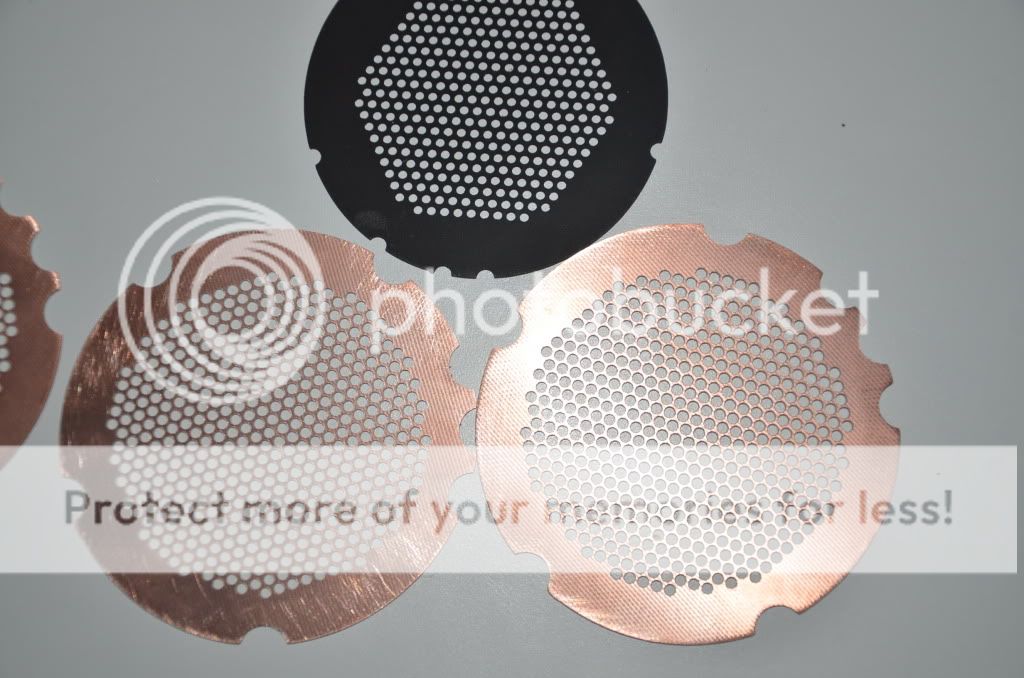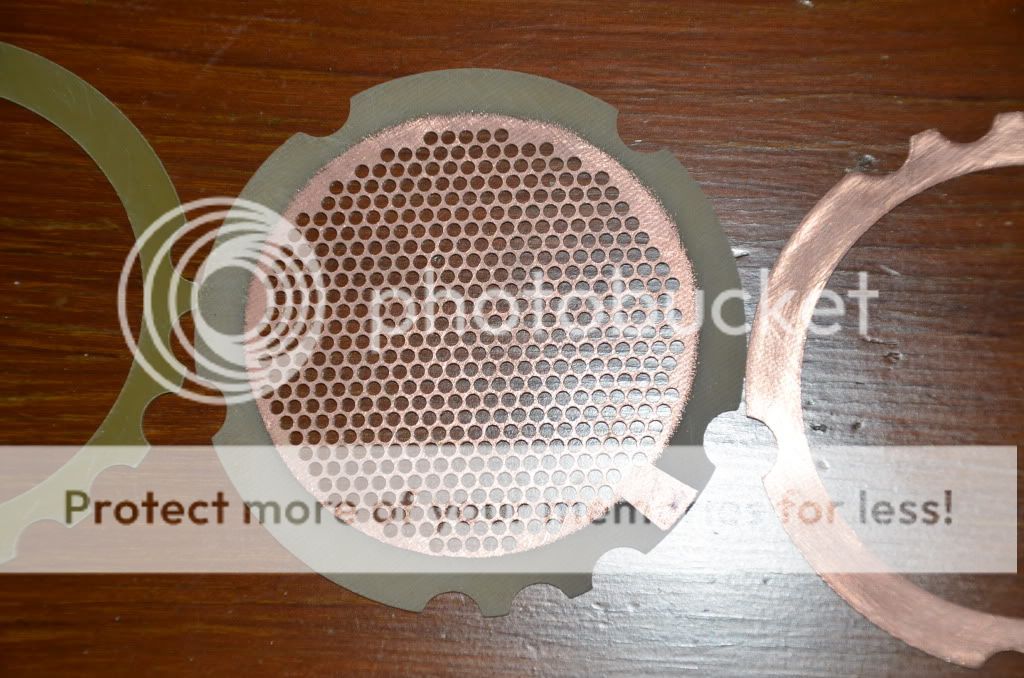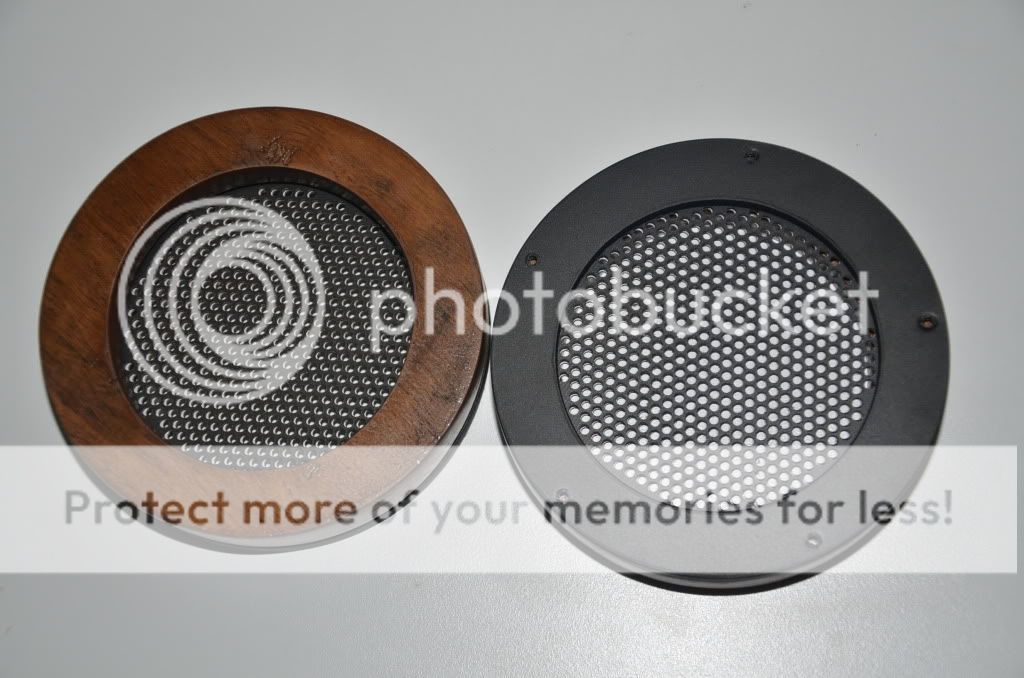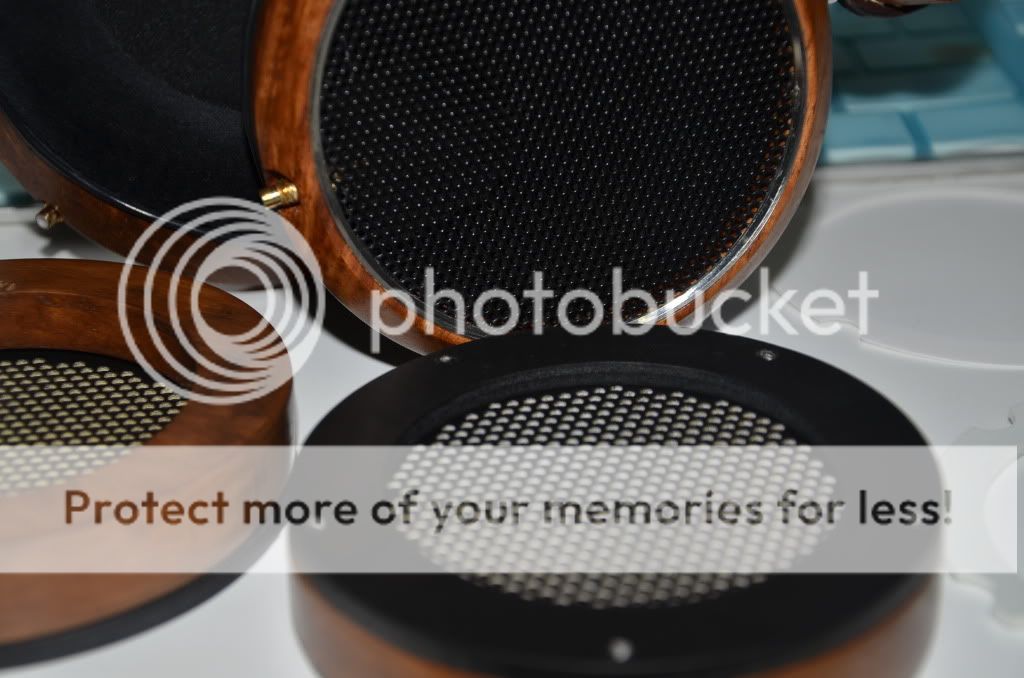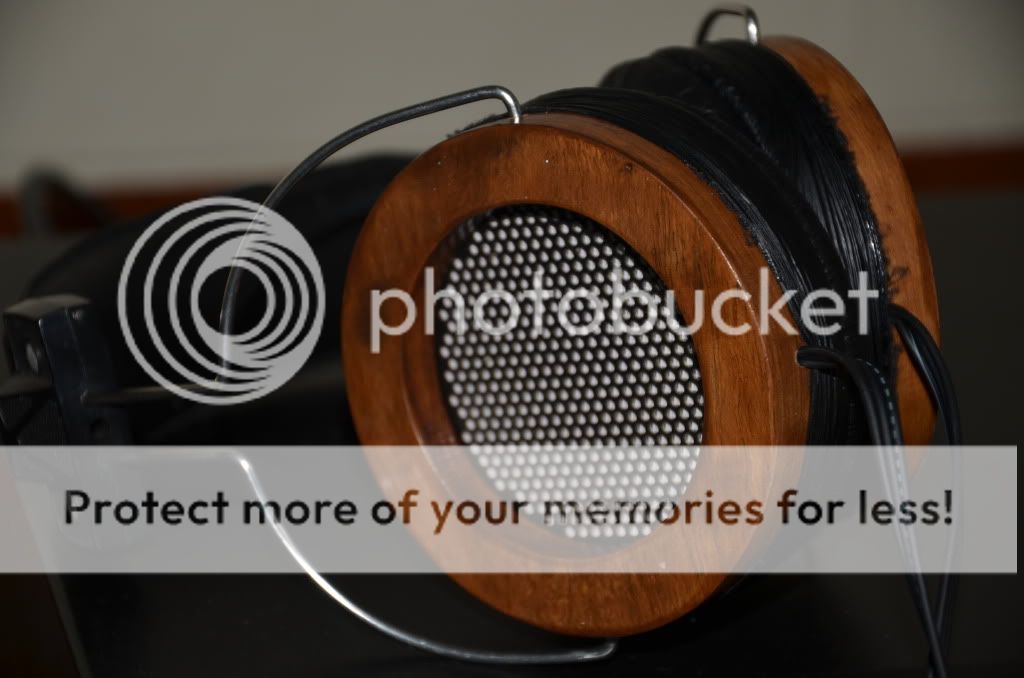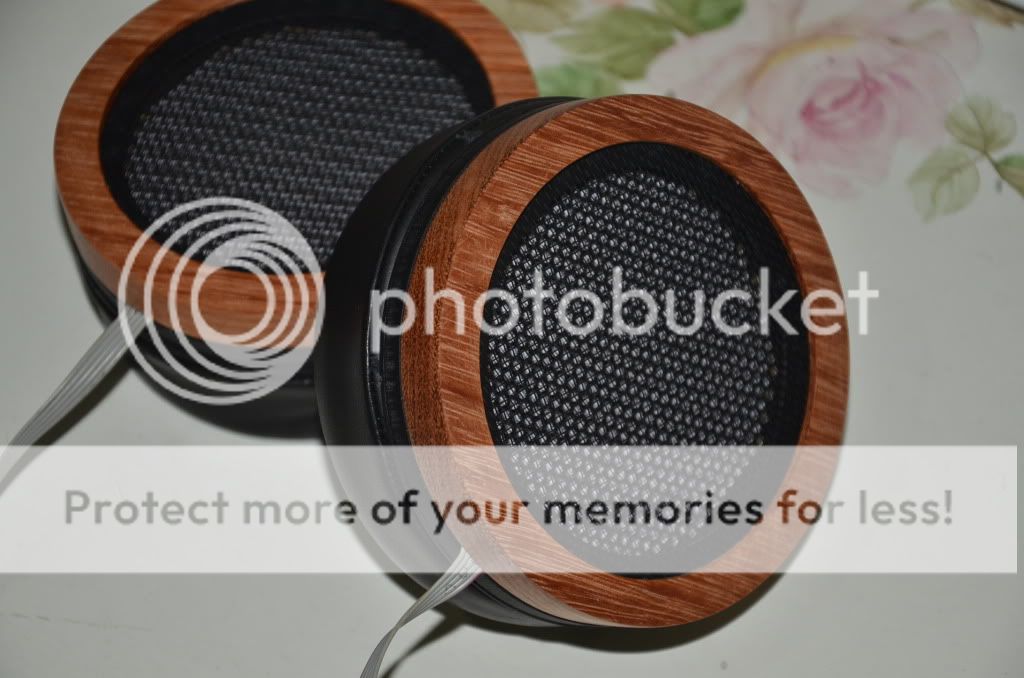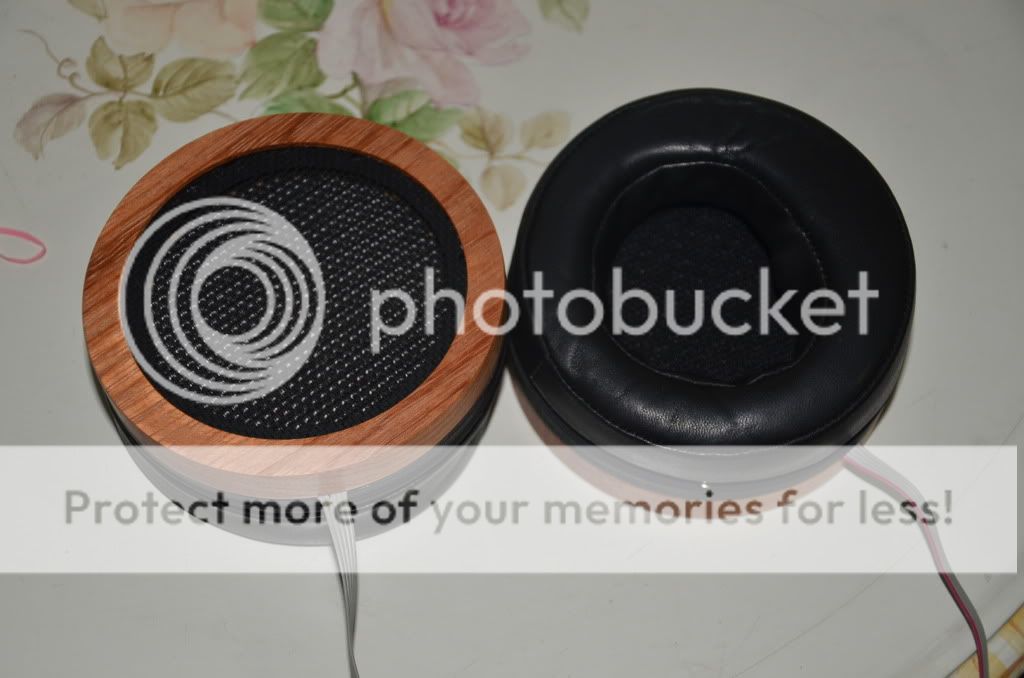Wachara,
Again about the two-diaphragm design.
My suspection is that your amplifier is too burdened by heavy capacitative load of your ESH. Dual-bias dual-daphragm (+ on one diaphragm, - on another, central stator having same voltage on both sides) already has twice the capacitance of a single-diaphragm design. It's actually similar to just having a bigger diaphragm, but there is some difference present. But at least it's useful capacitance.
But a single-bias design skyrockets the capacitance. If your stator plate hac 0.5mm thickness, and your spacers are 1mm, you're getting parasitic capacitance 4 times the capacitance of a single normal driver = 2 times the capacitance of the rest of the dual driver. Only about 30% of your amp's power is going to make sound, other 70% are just wasted.
Omega2's are considered by many to be already too much of a load for Stax amps, and your 1-diaphragm ESH already seem to have similar capacitance, judging by their size, and AFAIK you don't run a high-power amp like KGSS, so I really think that your amp is loaded to the limits by single-diaphragm ESH already, dial-bias dual-diaphragms may or may not have better sound, and single-bias ones would certainly degrade compared to single-diaphragms.
Again about the two-diaphragm design.
My suspection is that your amplifier is too burdened by heavy capacitative load of your ESH. Dual-bias dual-daphragm (+ on one diaphragm, - on another, central stator having same voltage on both sides) already has twice the capacitance of a single-diaphragm design. It's actually similar to just having a bigger diaphragm, but there is some difference present. But at least it's useful capacitance.
But a single-bias design skyrockets the capacitance. If your stator plate hac 0.5mm thickness, and your spacers are 1mm, you're getting parasitic capacitance 4 times the capacitance of a single normal driver = 2 times the capacitance of the rest of the dual driver. Only about 30% of your amp's power is going to make sound, other 70% are just wasted.
Omega2's are considered by many to be already too much of a load for Stax amps, and your 1-diaphragm ESH already seem to have similar capacitance, judging by their size, and AFAIK you don't run a high-power amp like KGSS, so I really think that your amp is loaded to the limits by single-diaphragm ESH already, dial-bias dual-diaphragms may or may not have better sound, and single-bias ones would certainly degrade compared to single-diaphragms.
Hi Nevod,
Thank you very much for your input. I know very well about the stray capacitance in the drivers. That's why I etched out most of the unneeded copper on the stators.
You might be right about the amp power. But I really doubt that it will make a whole lot of difference. The thing is I really don't quite like the sound from the double diaphragms design. Comparing to the conventional two stators and single diaphragm design, it's very obvious that the sound from the conventional design is far more natural.
Well, I'm now making a DIY Stax T2 clone, and I might come back to the 3 stators 2 diaphragms again just to try if it will make any difference.
By the way, I used 0.5 mm plastic spacer for those double diaphragms drivers.
Wachara C.
Thank you very much for your input. I know very well about the stray capacitance in the drivers. That's why I etched out most of the unneeded copper on the stators.
You might be right about the amp power. But I really doubt that it will make a whole lot of difference. The thing is I really don't quite like the sound from the double diaphragms design. Comparing to the conventional two stators and single diaphragm design, it's very obvious that the sound from the conventional design is far more natural.
Well, I'm now making a DIY Stax T2 clone, and I might come back to the 3 stators 2 diaphragms again just to try if it will make any difference.
By the way, I used 0.5 mm plastic spacer for those double diaphragms drivers.
Wachara C.
Alright, we'll see 
Also, have you tried 'deresonating' diaphragms on HF by employing an irregularly shaped spacers?
Sony used irregular pentagonal diaphragm and dust-protection membranes on their ECR-880 electrostatic headphones. To my knowledge, noone else used such a construction, but it would be interesting to hear one.
Also, have you tried 'deresonating' diaphragms on HF by employing an irregularly shaped spacers?
Sony used irregular pentagonal diaphragm and dust-protection membranes on their ECR-880 electrostatic headphones. To my knowledge, noone else used such a construction, but it would be interesting to hear one.
I don't know of any good pics, seen one a year ago, don't remember where.
Just imagine that the inner 'window' on your spacers is not oval or round, but is a polygon, say, a pentagon, and it's edges are not equal, so it's irregular.
Sony claimed that it got rid of resonances on highs.
Just imagine that the inner 'window' on your spacers is not oval or round, but is a polygon, say, a pentagon, and it's edges are not equal, so it's irregular.
Sony claimed that it got rid of resonances on highs.
Again, I have a proposal that I'm sorry not able to test ( no planar headphone on hands).
The old Fostex T50 ortho headphone used phase correction aperture on it.
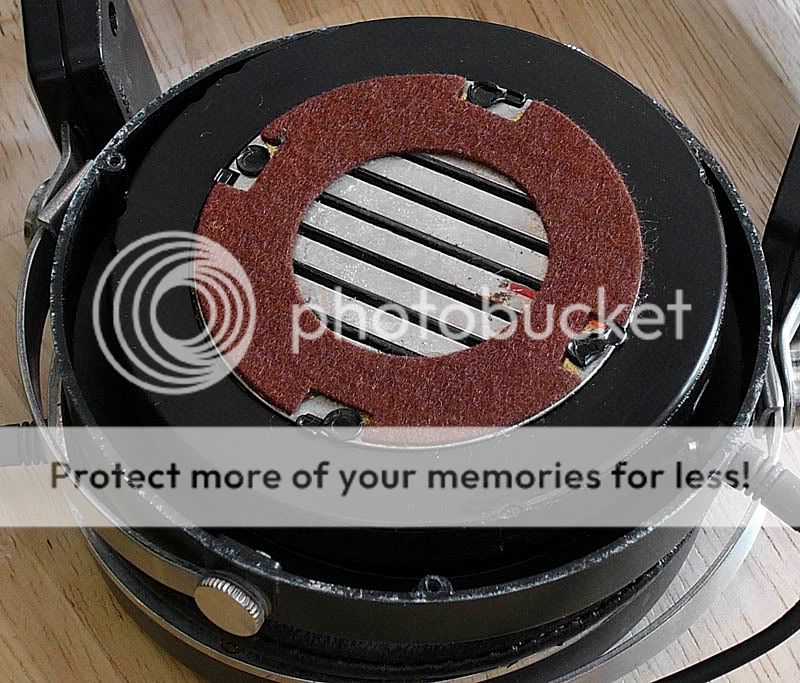
It's goal was, as I understand, to attenuate high frequencies coming from outer parts of diaphragm, and hence to reduce their influence to the phase of signal coming into ears - path length difference between distances from centre and from outer edge may be up to 2 wavelengths at 20kHz.
I'd like to know if you're interested and want to try something like that.
Sadly, I don't know how this phase correction aperture should be calculated. I think that better way to implement it would be to make it progressive: a very thin layer leaving only a small opening, then another layer with larger opening, and so on. However, that would be quite tedious..
I'm really sorry to post it here untested, if I'd be able to, I would.
The old Fostex T50 ortho headphone used phase correction aperture on it.

It's goal was, as I understand, to attenuate high frequencies coming from outer parts of diaphragm, and hence to reduce their influence to the phase of signal coming into ears - path length difference between distances from centre and from outer edge may be up to 2 wavelengths at 20kHz.
I'd like to know if you're interested and want to try something like that.
Sadly, I don't know how this phase correction aperture should be calculated. I think that better way to implement it would be to make it progressive: a very thin layer leaving only a small opening, then another layer with larger opening, and so on. However, that would be quite tedious..
I'm really sorry to post it here untested, if I'd be able to, I would.
Damping material, yes, attenuation of highs, yes, but not exactly. The center of the driver should be left uncovered. Sound coming from edges should be progressively attenuated, because sound waves come from driver edges with a delay, and the resulting waveform at the ear is different from what was intended to be reproduced, due to that phase shift. The further from driver's center, the more it should be attenuated. But a 30-40 mm center area should not be covered so as not to mess with non-delayed sound waves.
Read this and the similar thread over at DIY Audio and I think I might have to have a crack at a set. Spent the evening on Sketchup and have began designing the stator and spacer.


Ever so slightly ripped off from one of chinsettawong's designs. Do they seem ok so far? They're both 90mm in diameter so you have an idea of scale.


Ever so slightly ripped off from one of chinsettawong's designs. Do they seem ok so far? They're both 90mm in diameter so you have an idea of scale.
Are you noticing a difference in sound quality or efficiency with the larger diaphragms Wachara?
And as for the esl on a horn, I do design work for Volti audio and I am currently 90% of the way through a planar driven mid tweeter horn coupled with a bass horn that I'm calling the Klipsch killer. Goes considerably lower and cleaner than anything else I have been working with for quite a while.
Sorry for the off topic post Wachara!
And as for the esl on a horn, I do design work for Volti audio and I am currently 90% of the way through a planar driven mid tweeter horn coupled with a bass horn that I'm calling the Klipsch killer. Goes considerably lower and cleaner than anything else I have been working with for quite a while.
Sorry for the off topic post Wachara!
- Status
- This old topic is closed. If you want to reopen this topic, contact a moderator using the "Report Post" button.
- Home
- Amplifiers
- Headphone Systems
- Has anybody made an ELS headphone?
